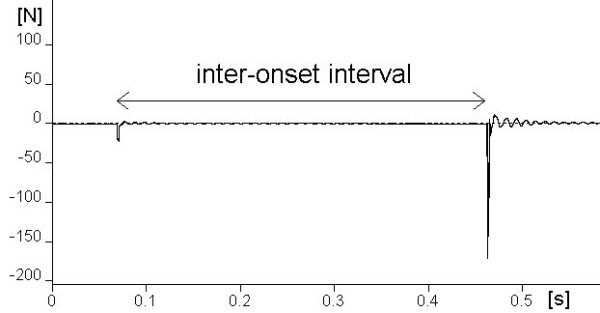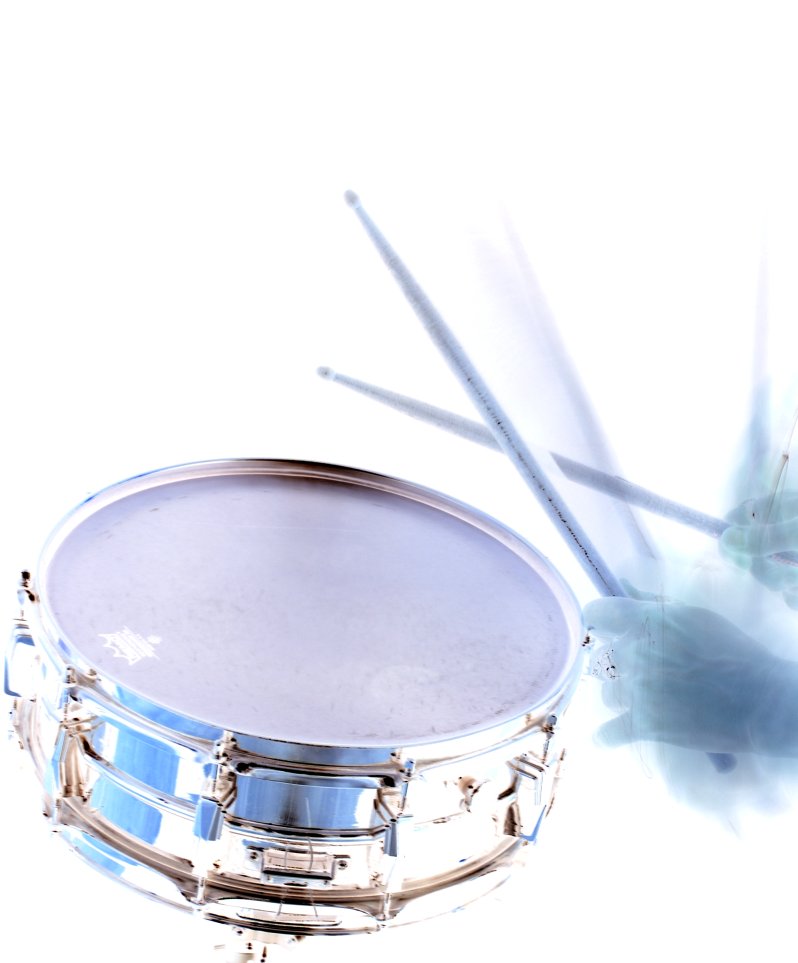Timing production and perception
For most musicians, and drummers and percussionists in particular, keeping time is a major focus. But this does not mean always producing time intervals that are equally loud and equally spaced in time (isochronous). Like all musicians, a drummer will give more emphasis to certain events/notes. For percussionists (and pianists), giving a note more emphasis is primarily done by changing its duration and/or dynamic level.
One way to study timing is to analyse the separation of the strokes in time, the inter-onset intervals (IOIs). As the name implies the time between the onset of each stroke in the signal is measured. The figure below show two strokes on a force plate, the IOI is about 0.4 s. The second stroke is an accented note and the force is much greater than for the previous, unaccented, stroke.

Perceiving grouping of strokes based on timing information.
Here you can listen to sequences based on recorded strokes with interleaved accents played by three professional drummers. The recordings have been used as a timing template onto which one standardised stroke has been pasted. This means that only the timing information is available for you to judge if there is a possible grouping of strokes. To confuse you there are also two completely synthesised sequences among the stimuli.
How would you categorize the following sequences of strokes?
Do you perceive groups of 2, 3 or 4 strokes
or no grouping at all?
A mp3 (316kB) B mp3 (355kB) C mp3 (350kB) D mp3 (350kB) E mp3 (353kB) F mp3 (343kB) G mp3 (348kB)
If you find this too difficult you can take a sneak preview of what the timing patterns looked like.
If you've already made up your mind maybe you want to see the complete answer.
...and here you can see how 30 listeners sorted the same files in a listening test as reported in Dahl, S.(2000). The playing of an accent - Preliminary observations from temporal and kinematic analysis of percussionists. Journal of New Music Research Vol.29(3), 225-234.

